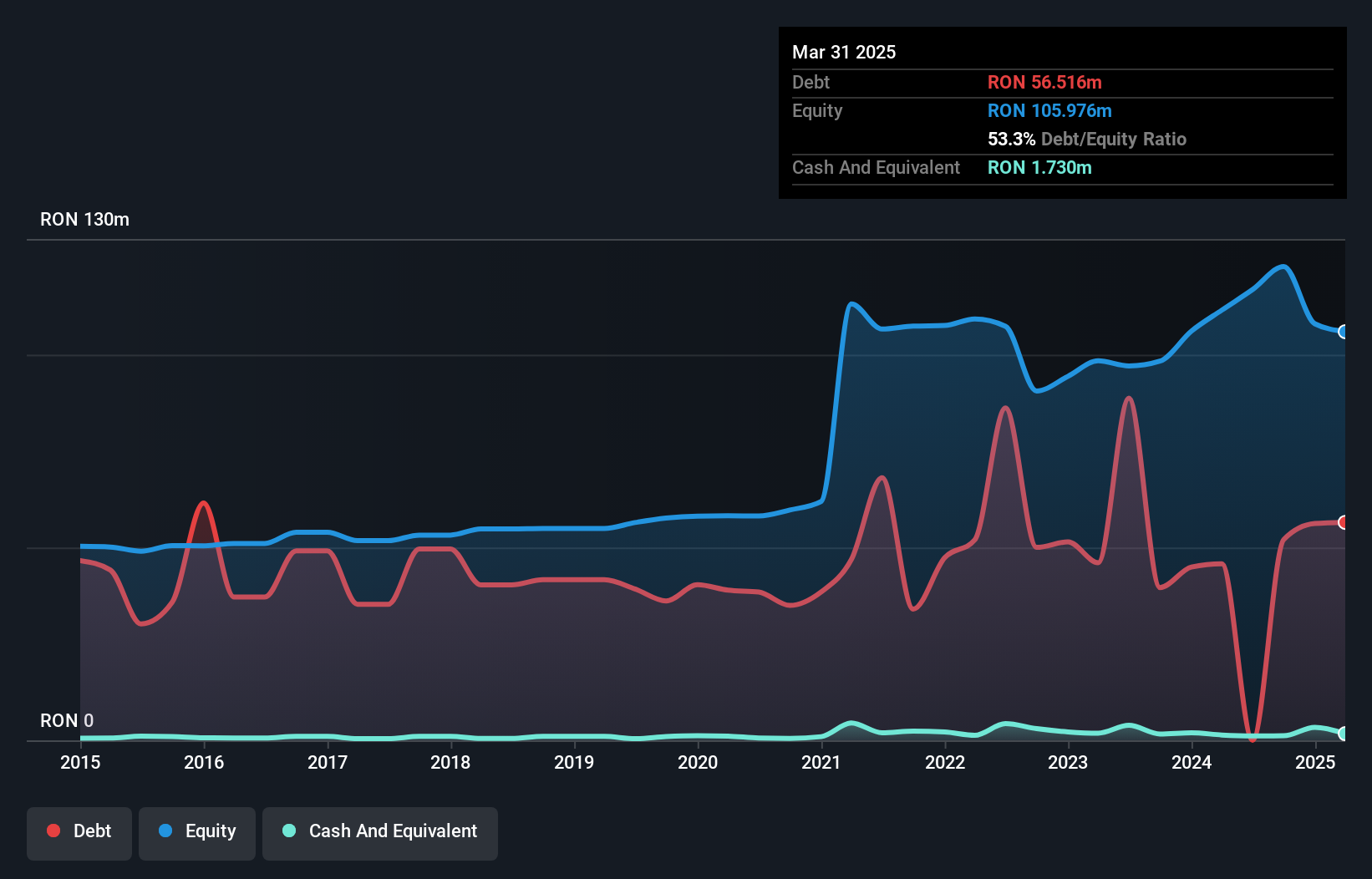These 4 Measures Indicate That S.C. Moara Cibin (BVB:MOIB) Is Using Debt Reasonably Well
Howard Marks put it nicely when he said that, rather than worrying about share price volatility, 'The possibility of permanent loss is the risk I worry about... and every practical investor I know worries about.' So it seems the smart money knows that debt - which is usually involved in bankruptcies - is a very important factor, when you assess how risky a company is. As with many other companies S.C. Moara Cibin S.A. (BVB:MOIB) makes use of debt. But should shareholders be worried about its use of debt?
When Is Debt Dangerous?
Debt is a tool to help businesses grow, but if a business is incapable of paying off its lenders, then it exists at their mercy. In the worst case scenario, a company can go bankrupt if it cannot pay its creditors. However, a more usual (but still expensive) situation is where a company must dilute shareholders at a cheap share price simply to get debt under control. Of course, plenty of companies use debt to fund growth, without any negative consequences. The first step when considering a company's debt levels is to consider its cash and debt together.
How Much Debt Does S.C. Moara Cibin Carry?
The image below, which you can click on for greater detail, shows that at March 2025 S.C. Moara Cibin had debt of RON56.5m, up from RON45.8m in one year. However, it does have RON1.73m in cash offsetting this, leading to net debt of about RON54.8m.

How Strong Is S.C. Moara Cibin's Balance Sheet?
According to the last reported balance sheet, S.C. Moara Cibin had liabilities of RON59.9m due within 12 months, and liabilities of RON53.3m due beyond 12 months. Offsetting these obligations, it had cash of RON1.73m as well as receivables valued at RON51.6m due within 12 months. So its liabilities total RON59.8m more than the combination of its cash and short-term receivables.
While this might seem like a lot, it is not so bad since S.C. Moara Cibin has a market capitalization of RON148.1m, and so it could probably strengthen its balance sheet by raising capital if it needed to. But it's clear that we should definitely closely examine whether it can manage its debt without dilution.
Check out our latest analysis for S.C. Moara Cibin
We use two main ratios to inform us about debt levels relative to earnings. The first is net debt divided by earnings before interest, tax, depreciation, and amortization (EBITDA), while the second is how many times its earnings before interest and tax (EBIT) covers its interest expense (or its interest cover, for short). The advantage of this approach is that we take into account both the absolute quantum of debt (with net debt to EBITDA) and the actual interest expenses associated with that debt (with its interest cover ratio).
S.C. Moara Cibin's net debt of 1.7 times EBITDA suggests graceful use of debt. And the alluring interest cover (EBIT of 7.7 times interest expense) certainly does not do anything to dispel this impression. Importantly, S.C. Moara Cibin grew its EBIT by 41% over the last twelve months, and that growth will make it easier to handle its debt. There's no doubt that we learn most about debt from the balance sheet. But it is S.C. Moara Cibin's earnings that will influence how the balance sheet holds up in the future. So if you're keen to discover more about its earnings, it might be worth checking out this graph of its long term earnings trend.
But our final consideration is also important, because a company cannot pay debt with paper profits; it needs cold hard cash. So it's worth checking how much of that EBIT is backed by free cash flow. During the last three years, S.C. Moara Cibin produced sturdy free cash flow equating to 79% of its EBIT, about what we'd expect. This cold hard cash means it can reduce its debt when it wants to.
Our View
Happily, S.C. Moara Cibin's impressive EBIT growth rate implies it has the upper hand on its debt. And the good news does not stop there, as its conversion of EBIT to free cash flow also supports that impression! Zooming out, S.C. Moara Cibin seems to use debt quite reasonably; and that gets the nod from us. While debt does bring risk, when used wisely it can also bring a higher return on equity. The balance sheet is clearly the area to focus on when you are analysing debt. However, not all investment risk resides within the balance sheet - far from it. To that end, you should be aware of the 3 warning signs we've spotted with S.C. Moara Cibin .
When all is said and done, sometimes its easier to focus on companies that don't even need debt. Readers can access a list of growth stocks with zero net debt 100% free, right now.
New: Manage All Your Stock Portfolios in One Place
We've created the ultimate portfolio companion for stock investors, and it's free.
• Connect an unlimited number of Portfolios and see your total in one currency
• Be alerted to new Warning Signs or Risks via email or mobile
• Track the Fair Value of your stocks
Have feedback on this article? Concerned about the content? Get in touch with us directly. Alternatively, email editorial-team (at) simplywallst.com.
This article by Simply Wall St is general in nature. We provide commentary based on historical data and analyst forecasts only using an unbiased methodology and our articles are not intended to be financial advice. It does not constitute a recommendation to buy or sell any stock, and does not take account of your objectives, or your financial situation. We aim to bring you long-term focused analysis driven by fundamental data. Note that our analysis may not factor in the latest price-sensitive company announcements or qualitative material. Simply Wall St has no position in any stocks mentioned.
About BVB:MOIB
S.C. Moara Cibin
Engages in manufacturing, processing, and selling grains and milling products in Romania and internationally.
Excellent balance sheet with moderate risk.
Market Insights
Community Narratives



